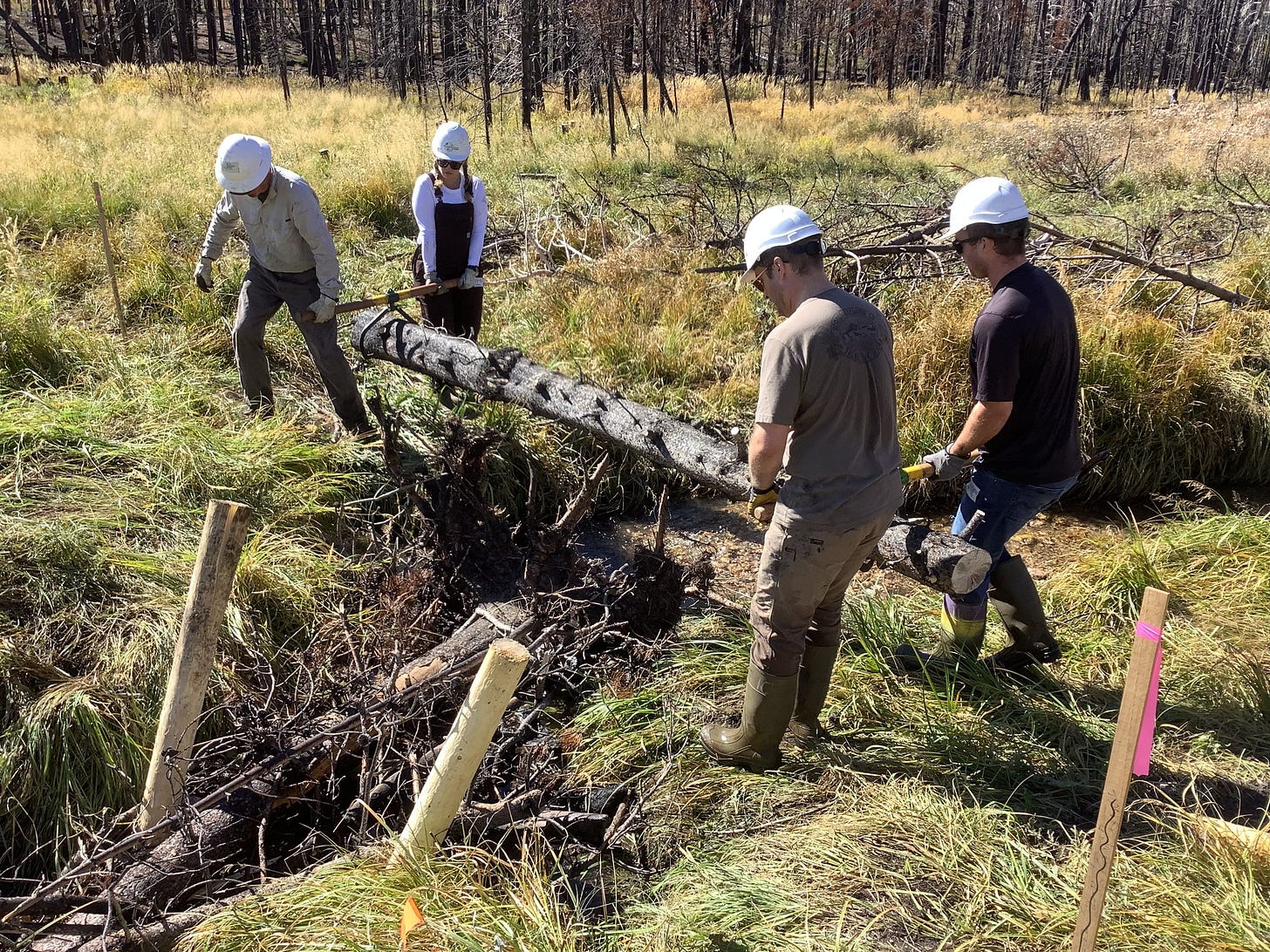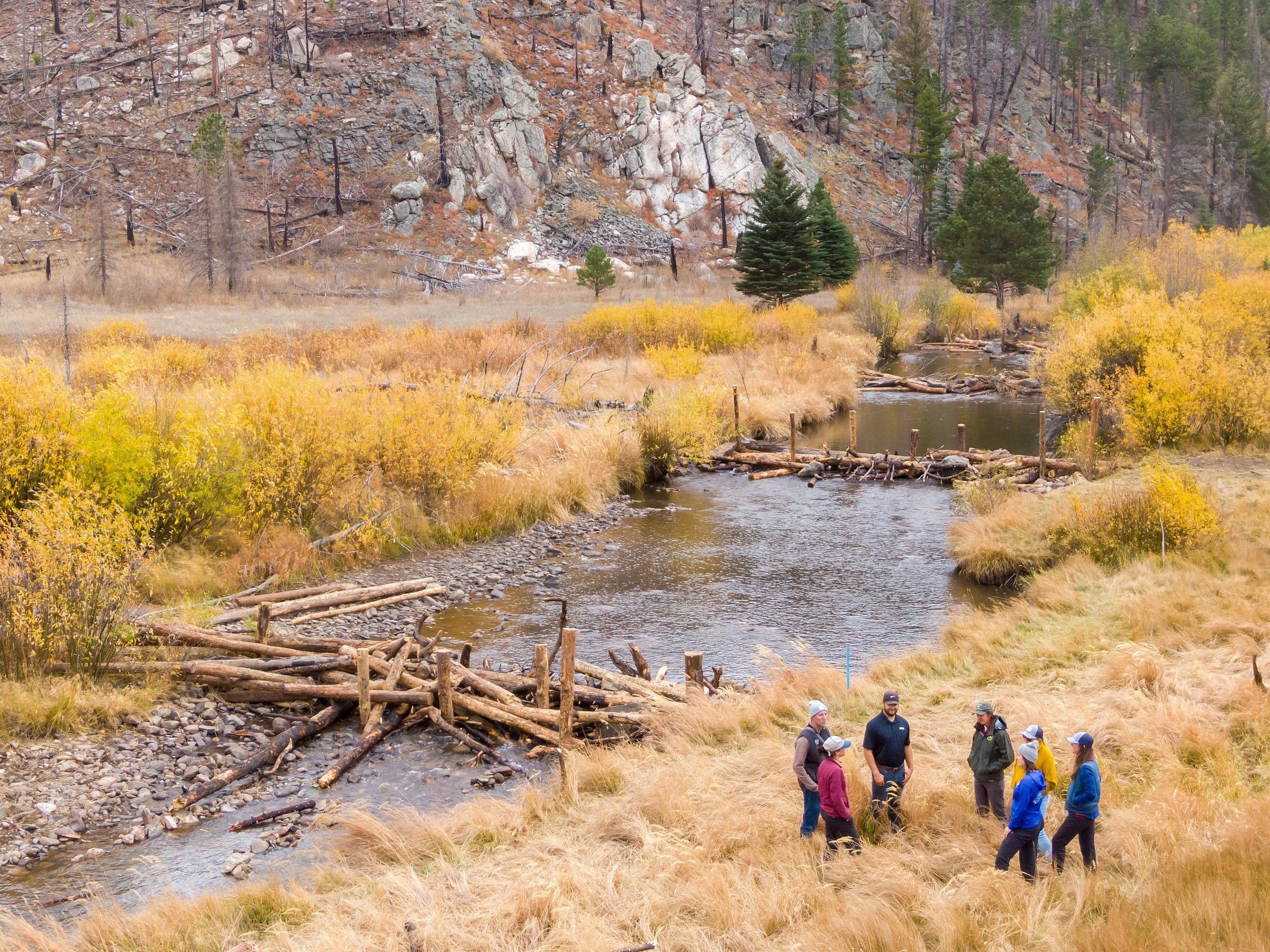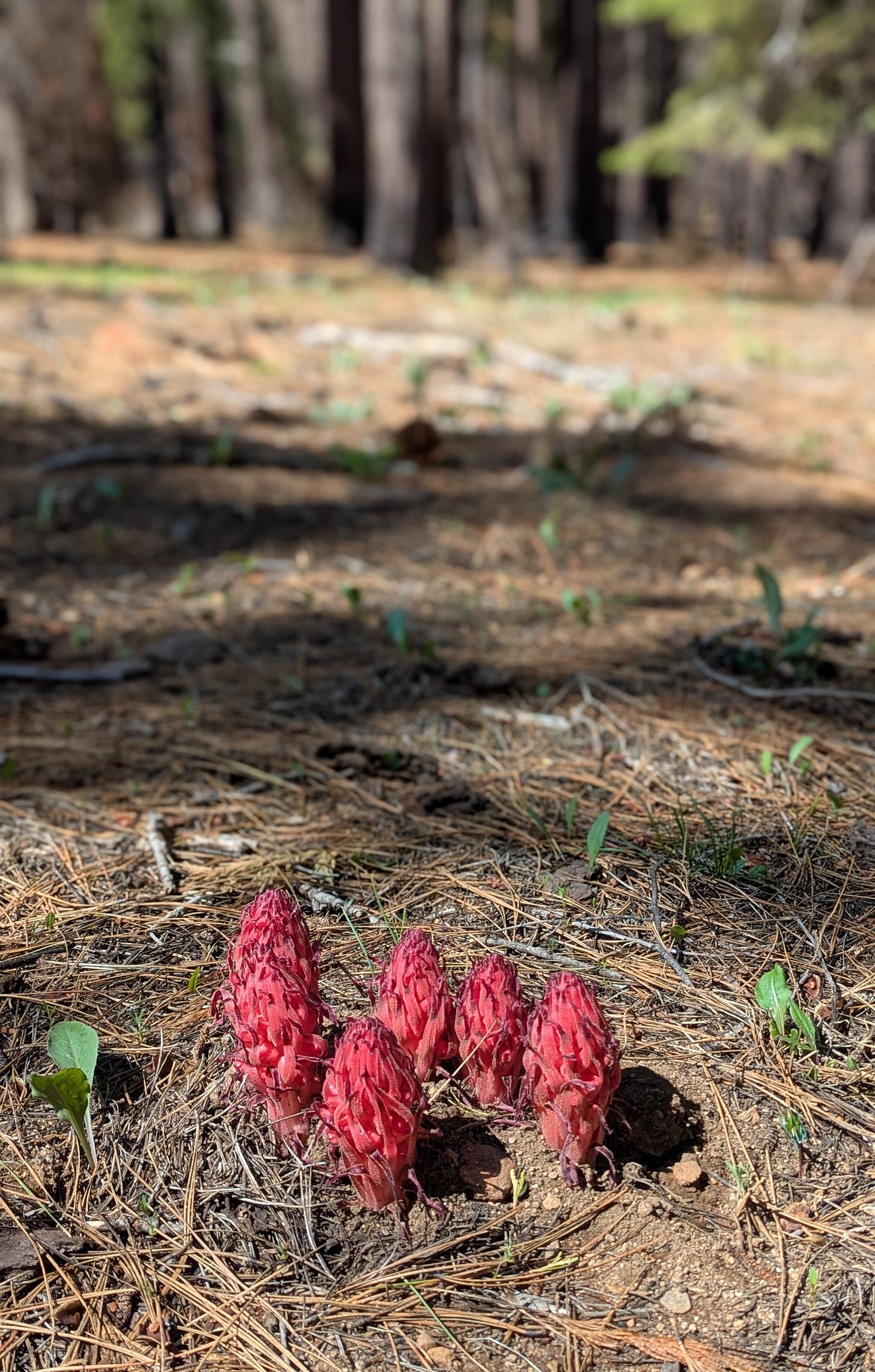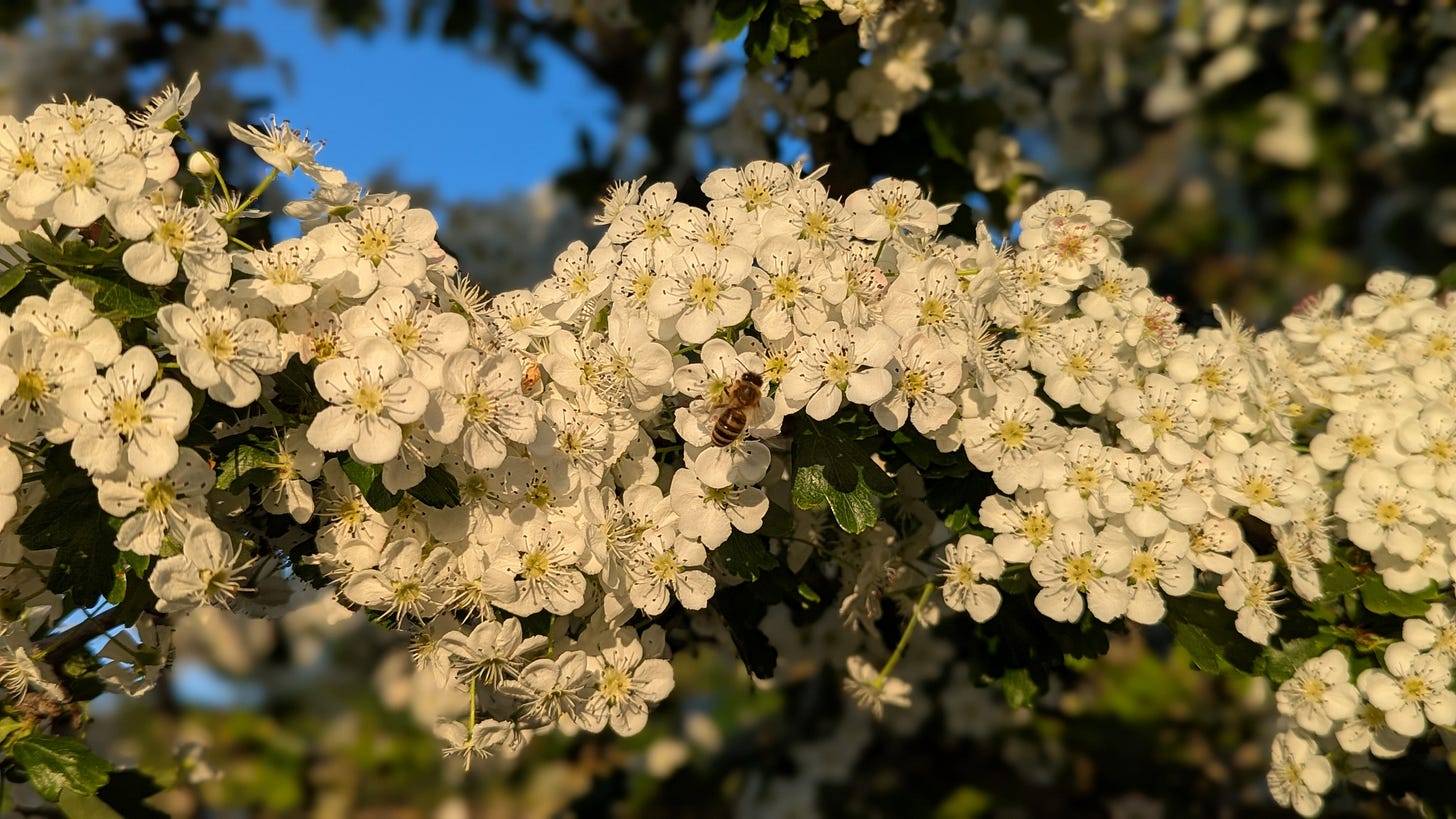Hopeful headlines: Saving rivers, wetlands, sturgeon, gorillas, butterflies, puffins, bees and clean energy
Humans dam it like beavers; the environment logs court wins; sturgeon rebound on the East Coast; four gorillas make it back to the wild; a tiny butterfly survives on the brink; and puffins thrive.

Coalition builds low-tech “beaver” dams to save Colorado meadow
A fire-ravaged meadow in Colorado is once more drenched in overflowing river water after a watershed group created small “beaver” dams to slow down flows and catch sediment. The work means willows and cottonwood, favorite foods of beavers, will have enough water to regrow. Beavers abandoned the meadow after a wildfire in 2020.
“Beavers have been active in this watershed and continue to be active, even through many wildfires,” Megan Maiolo-Heath, outreach manager at the Coalition for the Poudre River Watershed, told Earth Hope. “The area of the South Fork Poudre that we are working to restore was abandoned by beavers but, with the work we are doing, we hope they will make a return.”
Wetlands are hotspots of biodiversity as well as wondrous carbon sinks. A healthy meadow provides a safe home for bugs, birds and small animals that support the food web of surrounding ecosystems.
A fire ravaged 200,000 acres of Colorado’s Poudre River in 2020. Before the work, which spanned 3,400 linear feet of river (.6 miles), the meadow was drying out, streams were cutting deep into the soil, and sediment was flowing downstream, degrading drinking water quality in nearby towns.
The group built mock beaver dams by hand, using small, burnt trees from the surrounding landscape. They transplanted hundreds of willow and cottonwood stakes from nearby forests to the meadow. This low-tech approach is known as “process-based restoration,” where all-natural materials eventually break down after serving their purpose.
The Coalition for the Poudre River Watershed writes:
The response that we have seen at the South Fork post-fire river restoration site has been almost textbook for process-based restoration1. As the high flows from snowmelt runoff have traveled down from the mountains, we have seen water hit the wood structures and slow down. … This has caused water to spread across the lower portions of the floodplain, increasing the moisture in areas where we hope to see riparian vegetation expand in future years.
The low-tech approach is more affordable and effective than engaging in the “Restoration Industrial Complex,” a term Ben Goldfarb uses in his popular book, “Eager.: The Surprising Secret Life of Beavers and Why They Matter.”
America’s restoration industry employs 126,000 people, one third of whom work in stream restoration. The industry generates $9.5 billion in yearly sales. Yet if we give them a chance, four-legged rodents accomplish the same as costly engineering plans, studies and bulldozers that add up tens of millions of dollars.
“Beavers present both economic and ideological threats to traditional restoration: They provide highly skilled free labor that obviates the need for expensive interventions … . (“Eager,” page 238)
Though beavers fled along this stretch of the river, they survived in other areas scorched by Colorado’s 2020 megafires. In fact, their dams have been shown to slow fires.
NPR: Even Colorado's largest wildfire was no match for beavers
The Colorado Sun: Fighting fire with beavers: How dam-building rodents are deployed to prevent megafires, restore scorched wildlands
I’ve written here about the water quality impacts of megafires and why we should do our best to prevent such fires, even in forests far from homes.

U.S.: Federal judge’s ruling protects 78 million acres of wetlands nationwide
A Chicago-based land investor who took issue with a government incentive program that pays farmers to keep wetlands intact lost his suit before a federal judge last week. Plaintiff James Conlan, represented by the libertarian Pacific Legal Foundation, argued it was an infringement of his private property rights to base the payments on wetland protection. The incentive program, known as Swampbusters, is voluntary and protects 78 million acres, or two-thirds of wetlands that remain in the U.S.
Farmers, conservationists and the U.S. Department of Agriculture argued for keeping Swampbusters in place.
From The Chicago Tribune:
“Everyday Americans, and especially homeowners — they might not even know about this case — but it was a big win for them. Wetlands in the Midwest and across the country provide billions of dollars in mitigation benefits by preventing people from losing their homes due to floods,” said Katie Garvey, an attorney at the Chicago-based Environmental Law and Policy Center who represented the environmental and sustainable agriculture groups.
U.S. Supreme Court NEPA ruling is a boon for clean energy projects
Last week, the U.S. Supreme Court ruled unanimously to shrink the scope of the National Environmental Policy Act (NEPA) in a suit against a new railroad brought by environmental interests. Many are saying the ruling will allow for easier and less costly clean energy buildout. A Noahpinion guest post from 2023 by Santi Ruiz and Aidan McKenzie explains the need for NEPA reform: “No, NEPA really is a problem for clean energy”:
Other countries use strong bureaucracies to make sure development projects follow environmental laws; the U.S. is practically the only country to allow local NIMBYs the opportunity to tie up fully legally compliant projects in court for years over purely procedural requirements.
US East Coast: Sturgeon make a comeback decades after fishing bans
From The Smithsonian:
The researchers’ hauls add to a growing body of evidence from Maine to Florida that Atlantic sturgeon are slowly staging a comeback since overfishing brought them to the edge of extinction in the U.S. during the 20th century. A stock assessment released last year concluded that, while Atlantic sturgeon are far less numerous than they were historically, there’s “a 100 percent probability” the population is greater than it was in 1998, when a moratorium on commercially fishing the species went into effect.
Michigan: Saving a once abundant butterfly from extinction
The butterfly’s decline coincides with the shrinking of tallgrass prairies and the introduction of neonicotinoid pesticides—neonics for short—which are derived from tobacco and have been banned in Europe because of their harmful effects on pollinating insects. These pesticides are also the main ingredient in most pet flea medications.
“There are many times when I’m kept awake at night thinking about the fate of the Poweshiek skipperling,” says Nick Haddad, professor at Michigan State University, in the video above. “On the one hand, I’m anguished by the possibility of extinction, but on the other hand, that really motivates my efforts toward butterfly recovery because we really are the last remaining hopes for this butterfly surviving on the face of this Earth.”
Africa: International partnership releases four orphaned gorillas back to the wild
Four female eastern lowland gorillas are doing well after being released into Virunga National Park in the Democratic Republic of Congo last December. The gorillas were raised in a Congolese sanctuary after being orphaned by hunters who shot their parents for the illegal wildlife trafficking trade. Supporters hope the new females will help boost genetic diversity on Mount Tshiaberimu, which was home to only eight other gorillas who were at risk of inbreeding. The work marked the largest translocation of eastern lowland gorillas in Africa, an effort that was years in the making.
Read more about their story from Gorilla Doctors, a project of the University of California Davis School of Veterinary Medicine. Texas-based Re:wild partnered with Congo-based Gorilla Rehabilitation and Conservation Education Center (GRACE) and Gorilla Doctors.

UK: Puffins thrive on rat-free island
The BBC’s story on the record 43,000 puffins currently nesting on Skomer Island off the coast of Wales calls it a “conservation success story,” but fails to mention why. Puffins are thriving on Skomer because of an enormous effort to rid the island of rats and keep it rat-free. We must turn to The Guardian for a reminder of Jinx, Skomer’s rat-sniffing spaniel, introduced to us in 2023 (he’s as cute as a puffin).
It’s a reminder that, nowadays, whenever something good is happening in the environment, it’s because very dedicated people decided to make it happen. In this case, the group Biosecurity for Life monitors Skomer and several other islands to keep it rat-free.
I’ve written about other efforts to rid islands of rats to save seabirds here:
Overturned truck: Even honeybees are scary?
Picking on the BBC again, did anyone notice that their story on the overturned truck in Washington state referred to the bees as both “escaping” and needing “rescue”? As a word nerd, this whiplash made my eyes pop out. When something has escaped, doesn’t it need to be “captured” again? Likewise, when something needs “rescue,” hasn’t it first been “lost”?
The bees weren’t convicts on the run, looking to sting anyone who crossed their paths; they had no agency in their hives’ disarray.
Honeybees find their way back to their queen bee through scent, a trait that likely evolved along with frequent disturbances to hives. Beekeepers can help by finding the queen and placing her in a safe place. It might take a few hours, but her sister bees will eventually find her. More accurate words for helping the bees might have been “lure,” “guide” or “organize.”
“Millions of bees reorganize into hives after truck overturns” is not exactly an algorithm-stealing headline. But it’s a little gentler on the psyche, no?
What really needs a rescue is our lost understanding of these gentle insects.
What else I read this week
, former Senate majority leader and current board chair of The Nature Conservancy: “Powering the Future: Why America Must Double Down on Nuclear Energy”Pro-nuclear think tank publication The Breakthrough Journal: “After the Green Vortex; Why Energy Policy Bipartisanship Could Be Closer Than We Think.”
High Country News editor
: “Block, Bridge, Build; A conservation strategy for the foreseeable future”These articles talk about how we get the things we want. How solutions happen. It’s not through partisan shouting, hanging out at the fringes, and taking an uncompromising stance. It’s by coming to the center, where we can hear each other, talk and find common ground.
I keep hearing that “bipartisan” is a dirty word. But we’re lost without it. Science shows us the Earth needs saving, volunteers and eco-organizations show us how to do the hard work on the ground, but we can’t get the policy changes we want until we find the center. It’s where progress happens.

About Earth Hope:
Earth Hope is a solutions-based journalism project that highlights environmental success stories to inspire action. I’m Amanda Royal, a former newspaper reporter and current eco-news junkie. Read more about this project and what inspired it.
Visit earthhope.substack.com for more stories. Heads up: I’m taking a break from my writing and editing services for the summer.
Occidental Arts & Ecology Center provides a good definition here: “[Process-based restoration] is different from ‘form-based’ restoration in that PBR typically uses low-tech, low-emissions, and hand-scaled solutions with natural materials that are meant to eventually break down and become part of living and evolving ecosystems.”








"The butterfly’s decline coincides with the shrinking of tallgrass prairies and the introduction of neonicotinoid pesticides—neonics for short—which are derived from tobacco and have been banned in Europe because of their harmful effects on pollinating insects." I just saw a letter to Bayer, the largest manufacturer of these chemicals, from Natural Resources Defense Council. Like business plans for peace (because peace is far more profitable than warring), defense of the natural wildernesses and worlds feels like a real uphill climb. But people like you Amanda make it feel easier.
Fingers crossed and good luck for a well deserved summer break . Hope to read your interesting newsletter again.